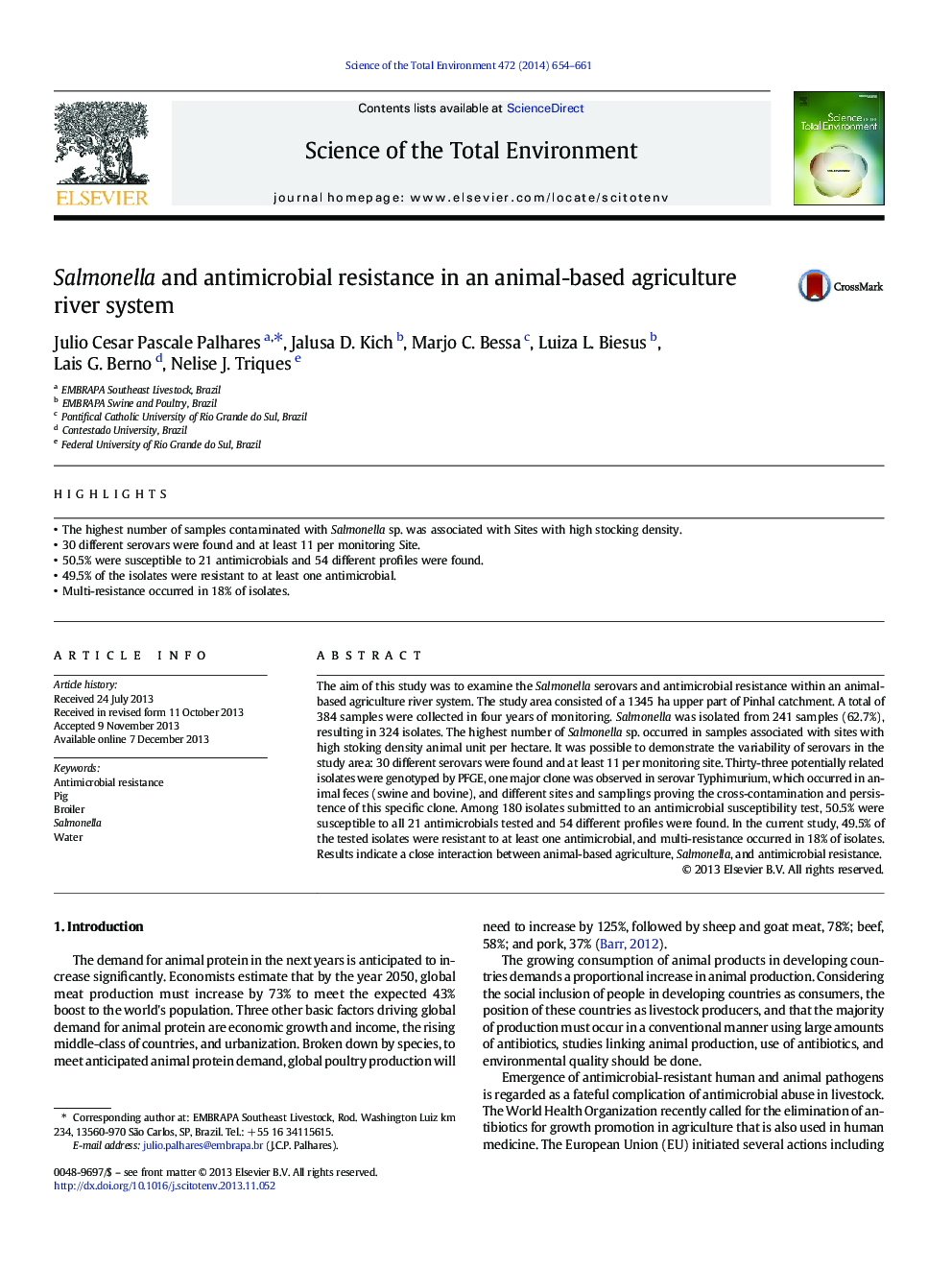| Article ID | Journal | Published Year | Pages | File Type |
|---|---|---|---|---|
| 6331226 | Science of The Total Environment | 2014 | 8 Pages |
â¢The highest number of samples contaminated with Salmonella sp. was associated with Sites with high stocking density.â¢30 different serovars were found and at least 11 per monitoring Site.â¢50.5% were susceptible to 21 antimicrobials and 54 different profiles were found.â¢49.5% of the isolates were resistant to at least one antimicrobial.â¢Multi-resistance occurred in 18% of isolates.
The aim of this study was to examine the Salmonella serovars and antimicrobial resistance within an animal-based agriculture river system. The study area consisted of a 1345Â ha upper part of Pinhal catchment. A total of 384 samples were collected in four years of monitoring. Salmonella was isolated from 241 samples (62.7%), resulting in 324 isolates. The highest number of Salmonella sp. occurred in samples associated with sites with high stoking density animal unit per hectare. It was possible to demonstrate the variability of serovars in the study area: 30 different serovars were found and at least 11 per monitoring site. Thirty-three potentially related isolates were genotyped by PFGE, one major clone was observed in serovar Typhimurium, which occurred in animal feces (swine and bovine), and different sites and samplings proving the cross-contamination and persistence of this specific clone. Among 180 isolates submitted to an antimicrobial susceptibility test, 50.5% were susceptible to all 21 antimicrobials tested and 54 different profiles were found. In the current study, 49.5% of the tested isolates were resistant to at least one antimicrobial, and multi-resistance occurred in 18% of isolates. Results indicate a close interaction between animal-based agriculture, Salmonella, and antimicrobial resistance.
